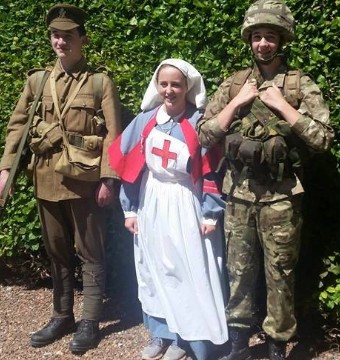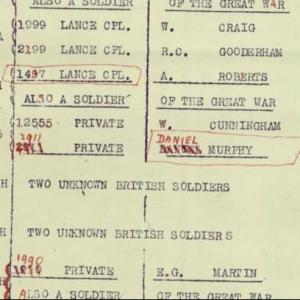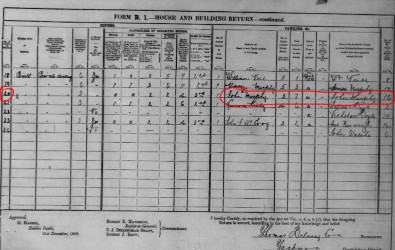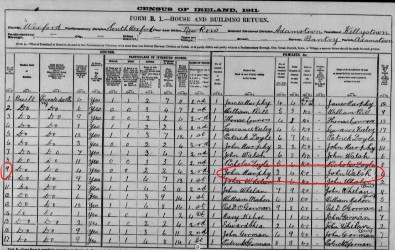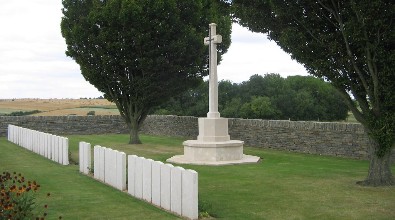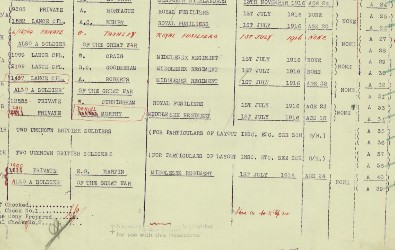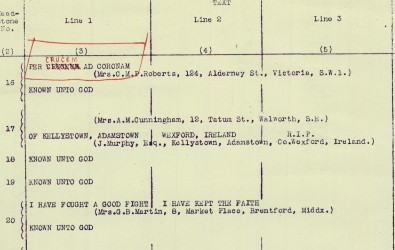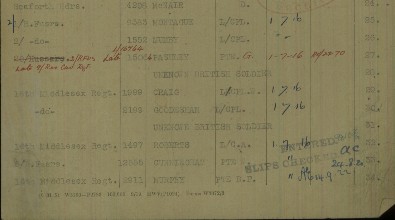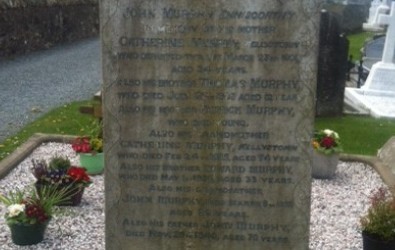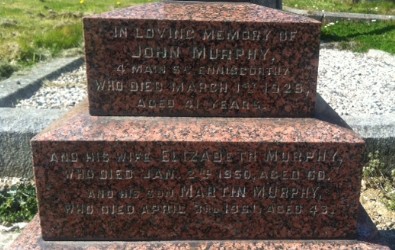My name is Emily Boyne and I am a sixteen year old secondary student in Coláiste Bríde, Enniscorthy, Co. Wexford.
My Adopted Soldier
I heard about the My Adopted Soldier programme from my history teacher, Aisling Quinn. Ms Quinn told my class about it and encouraged me to apply. I would be lying if I said I wasn't interested, so, I went home and wrote the 300 word application that as required and hoped for the best. I applied along with a number of other Transition Years and some fifth years. The competition, in my school alone, was fierce. I knew that any of the other girls could just have easily taken my spot, but I hoped that my excitement and passion had come across in my application and that it be to my advantage.
Why I applied to this Project
I applied to the My Adopt a Soldier programme because of my love for history. I have always had a specific interested in the wars which added to my excitement about this project.
- He told us that an American soldier gave him his first bar of chocolate. When he was nine years old, and he and his family where hiding from the Nazis, he was told to go up from the basement and to check if the cost was clear (i.e. that the Nazis had retreated). He had to do this because if the Nazis saw them with a white flag, they would be shot for treason. However, when he got to the ground floor, he didn't see a Nazi, but an American. The Germans were told the the Americans were cruel, even evil, and that they would shoot you without a second thought. Instead of killing Franki, the American soldier gave him some chocolate and left him in peace.
- Franki, also, told us that many of the Polish and Czech prisons who were sent to work on the local farms while imprisoned in Dachau murdered the farmers who mistreated them while they were working.
- Franki told us that everyone in Dachau knew what was going on in the camps but no one could talk about it, because if you did, you were sent to the camp yourself.
It's very easy to blame the German nation in general for what happened but, people forget, that the Germans were prisoners is there own way.
Here is a picture of Dachau concentration camp.
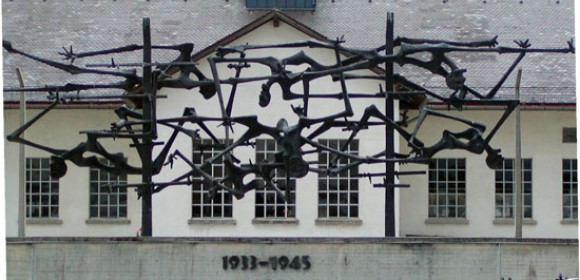
A few years after that, while my family and I were on holiday in France, we told the man who owned the house that we were renting that we loved history. He suggested that we should go to Oradour-sur-Glane. Oradour-sur-Glane was a small French village that the Nazis razed to the ground, murdering men, women and childre. The men were brought into a barn and shot in the knees, before the barn was set on fire. The women and children were brought into the church and it was set on fire. If you go to the church today, you will see the burnt remains of a baby's pram sitting in the middle of the church, and an open window where one child escaped, and lived to tell the tale. The villagers who were away that day, returned and found the desolation. In honour of their loved ones lost, the village remains to this day as it was on that horrid afternoon.
Displayed are some pictures of Oradour-sur-Glanes as it stands today.
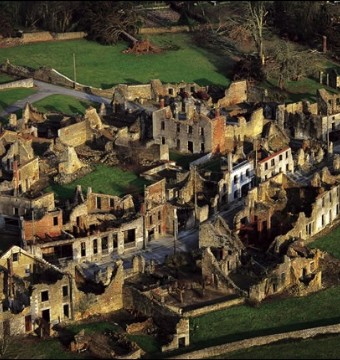
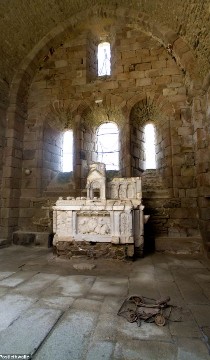
As time has gone on over the past year, I have realised that there is more history in my blood than first imagined. Not only am I a descendant of the King of Leinster but, my great-grandfather was in the original IRA and one of the first hunger strikers. He was also close friends with Eamonn de Valera. My grandfather also has an autograph book that contains the last thoughts of the men of the IRA before their execution in Mountjoy prison.
My Research
I was over the moon when my principal told me that my application into the My Adopt a Soldier programme had been successful. A few months after finding out, my history teacher, Aisling Quinn, gave me the basic information of my soldier before Mr. Gerry Moore sent it on to me. I was given the basic information that is written on Daniel's headstone and a few websites that would get me started. I slowly but surely got on my way with the research and by the time we met in Collins' Barracks, I was nearly finished. I used websites such as cwgc.org and www.census.nationalarchives.ie to get basic information on Daniel. After this I came to a type of dead end because the 16th battalion of the Middlesex regiment was often described as the "public school" battalion, but because Daniel grew up in Ireland it is unlikely that the battalion was just that. I got in contact with a local historian, Tom MacDonald, who was recommended by a teacher in my school. He told me that he would gladly meet me in the Wexford library, so my dad and I went to see what we could find out. Tom was very helpful and as was Michael, who we met at the library. We combed through both the People's Press and the Free Press newspaper from a few weeks before 1st July 1916 to a year later. Unfortunately, there were no mentions of Daniel dead, wounded or missing.
Here are some pictures that I took of the newspapers while looking for any mention of Daniel.
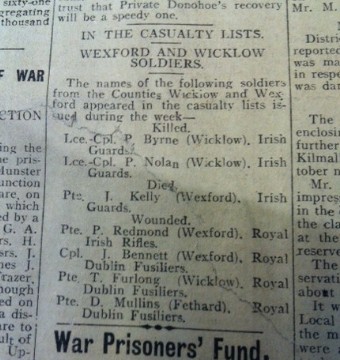

I also had the help of the wonderful Greta Brown, a local historian, who knows everything about everything. She helped me to track down Daniel's family's graves and make more sense of what I already knew. She knew the reasons why there was little information on Daniel and other things that I would not have known if not for her. Greta has been to the Somme many times and so was very excited when I told her about the trip.
Representing Co. Wexford
I am extremely proud to be able to say that I get to represent my county, not only in Ireland, but abroad and in front of President Michael D. Higgins. In April, the representatives of the South-East counties met and introduced our soldiers to a group of people including some members from the Waterford Treasures Museum and the Waterford Branch of the History Teachers Association of Ireland. This was another brilliant experience.
A few weeks later, I was invited onto South-East Radio's Youth Scene airing Tuesday evenings. I was interviewed about the project, about Private Daniel Murphy, about our meet up in Collins' Barracks and about our trip to the Somme.
Our meet up in Collins' Barracks
Here is a video about our meeting in Collins' Barracks in March. This was a great day where we learned a lot about the trip and we got to know each other.
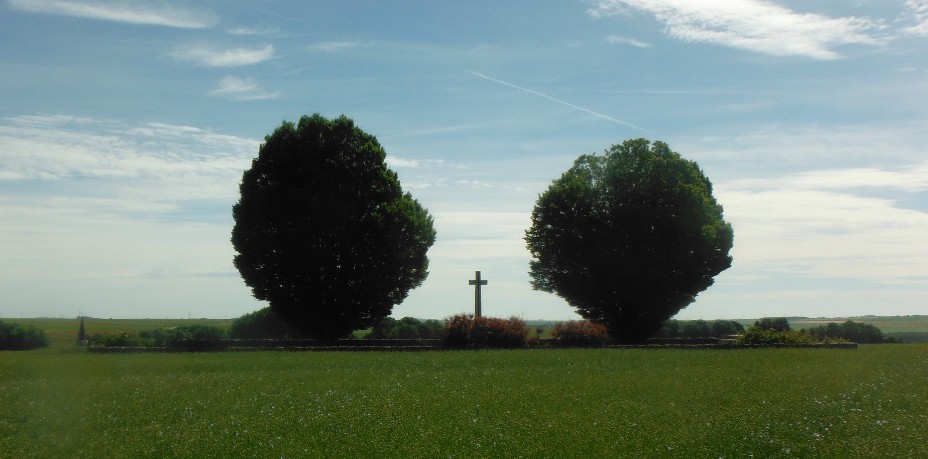
the trip to the somme
26th - 29th june 2015
Friday 26th June
Early that morning, all 39 students, made our way to the place it would all being; Ratra House. On arrival, we waited around, talking to each other and matching Facebook profile pictures to faces as everyone arrived. We were brought into the building where we collected our red and purple polo shirts and our red jackets and donned the purple polos, ready to meet the President. A few short interviews about our hopes and dreams for the trip later and we were ready to go.
We said "slán" to our families before climbing aboard the bus and making our way to Áras An Uachtaráin to meet President Michael D. Higgins. When we arrived at the Áras, we were brought into a large room, where we would be meeting the President. We formed a semicircle around the room, our excitement building as we talked to one another. The President was introduced to each of us in turn by Gerry Moore, learning our names and counties as he welcomed us to the Áras. Once the President was finished greeting us and had cracked a few jokes along the way, he gave a moving speech about the importance of remembering World War 1 and all the that fought and died, especially the Irish who were not seen as the heroes that they should have been. I think that at this moment, we all realised just how important and emotional this trip was going to be.
Once the speeches were given and the trip finally started, we were brought into an adjoining room where we had tea with the President. Having tea with the President is something I could never have imagined happening and at the time it felt like I was dreaming, except for the fact that I wouldn't have been able to dream up something so brilliant. Even today, it still feels surreal and if it wasn't for the pictures, I probably wouldn't believe that it happened.
Except that it did and it was such a privilege to represent my county at something so important.
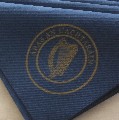
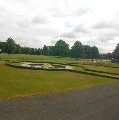
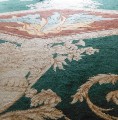
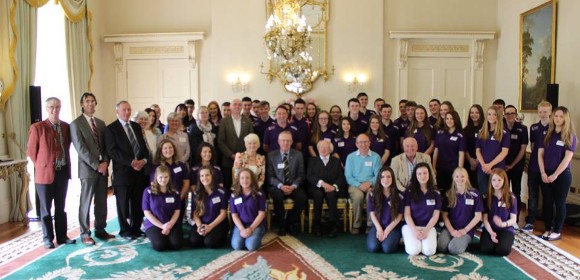
Once the President had left, we climbed back onto the bus and made our way to Dublin airport. When we got there we checked in our suitcases, made it through security leaving no man behind and went for some desperately needed food. Most people bee lined for Burger King, but for those of us who forgot our antihistamines, when we finally made it to food court, the line was too long for Burger King and time was ticking, so we went to the "healthy hipster place" for a sandwich instead.
After some food and a trip to the shop to get sweets for the plane, we made our way down to the gate where we were split into our groups that we would go to for a head count during the trip. I was put into the "Connacht and Weinster (W's in Leinster) Group", which we quickly decided was the best.
As we boarded the plane, the excitement grew as it finally started hitting us that we were going on the trip that we had been waiting the whole year for. All the work, all the research, all the searching had led to this and there we were, on our way to finish what we had started, to end our soldier's stories that been left unfinished for so long.
After a quick two hours of chatting away, the plane landed in Brussels Airport. As we cleared customs, collected our baggage and climbed aboard the, much to our relief, air conditioned tour bus, we talked about the trip and had a discussion about what language we were to speak while on the trip; be it French, German or just stick to English.
I can tell you now, that you do not want to be stuck in rush hour traffic on a Friday evening in Brussels. It's like the traffic on the M11, but about ten times worse. So, after the long bus journey spent talking about the war, school, the trip and nearly every topic under the sun, we began noticing random cemeteries popping up everywhere. They were in the strangest places; beside houses, in the middle of villages or in the middle of nowhere. The reason for that was that literally everywhere your eye could see had been a battlefield. You could almost picture the rolling hills covered in debris, bodies thrown everywhere as the war raged on. As people stared to notice the cemeteries, the noise started to quieten down, an almost eerie quietness taking over and sending a chill throughout the bus.
When we pulled up and were told we were going to get food, everyone jumped off the bus, eager to eat the food that was waiting for us. We spent the evening chatting, our excitement for the rest of the trip as clear as day as we talked about what we hoped what happened and exchanged spiels about of soldiers.
After our meal, we walked the short distance to the Ibis Hotel and were given our room keys and roommates before heading off to get ready for bed.
It's safe to say that we slept like logs that night, looking forward to the day ahead of us.
Saturday 27th June
Saturday kicked off with breakfast in the Ibis before we hopped on the bus and started our history filled day.
The first place we visited was the Lochnagar Crater. It is 300ft in diameter and 70ft deep. The crater is one of the only ones of its kind left as opposed to being filled in with debris, it was bought
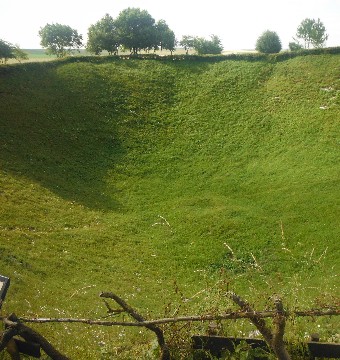
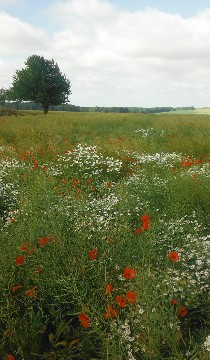
and preserved as a reminder and a memorial. This crater was created when the British launched an offensive attack against the Germans on the 1st July 1916.
As Gerry told us about the memorial, I couldn't help but try to picture the events that happened there, to even try to see myself as to having witnessed it, but its not something you can explain, its not something a war film can cover because what these men went through was hell on earth.

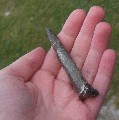
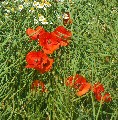
We continued on and began visiting Commonwealth Commission cemeteries. They are set up to look like a typical English country garden so that the men buried there would at least have some familiarity in death, even if they could not go home. The grass is freshly mowed, the flowers laying in front of the graves kept to perfection, the headstones clean and well kept, creating something picturesque.
I think the thing that made the fact that we were there hit me was when I found graves members of Private Daniel Murphy's Regiment who had died on the same day as him. I think finding something like that even before seeing Daniel's grave myself really made me aware that I was there.
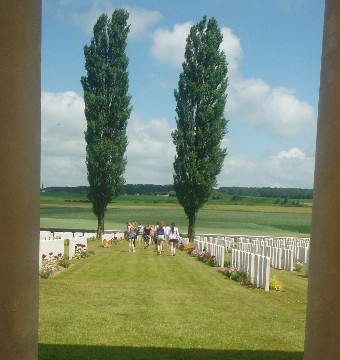
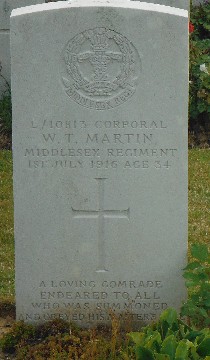
We were then brought to the German Cemetery, Fricourt and on walking in, I was hit with a wall of emotion. While the Commonwealth cemeteries were made look like an English country garden, the German cemetery was made look like a German forest. Compared to the bright and peaceful feeling of the Commonwealth cemeteries,
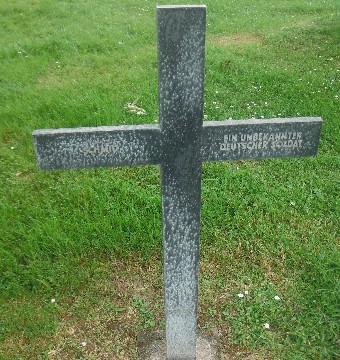

the German cemetery was dull, the light blocked out by the trees and had a feeling that I can only describe as heavy. In the Commonwealth cemeteries, only one soldier, or sometimes two, is buried in each grave, whereas in the German cemetery, each grave contained four soldiers. They were simple crosses with four names, two on each side. Sometimes, it was a full name, sometimes it had the date they died, but also some were just a surname, leaving them practically untraceable. There were also headstones with the Star of David for the Jewish soldiers who were killed. I think the things that were the hardest to deal with, for me personally, were that; I found my friend's surname on one of the graves, just a surname; and also the fact that at the bottom of the cemetery, there were four mass graves, each containing nearly 12,000 in total. How deep would they have had to dig those graves to fit so many people in? Well, so deep that bodies would have been literally thrown in like trash.
That heavy and empty feeling stayed with me even as we were on the bus again. It stayed with everyone. We made attempts to take our minds off it, talking about anything and everything we could, cracking jokes and trying to laugh. It was either that or cry.
We moved on with the trip, going to some more cemeteries before we stopped for some food; a baguette and a drink.
Once we were satisfied, we moved on to more cemeteries and visited the grave of the Private William McBride from the song "The Green Fields of France".
While we were there, we sang "The Green Fields of France" to remember not just Private McBride, but all of the soldiers who fought and died.
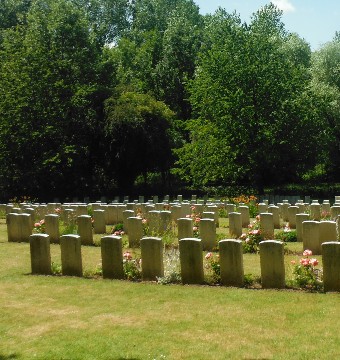
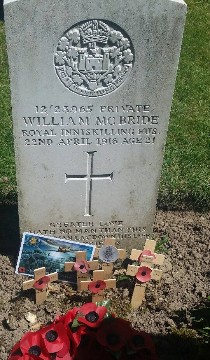
As we were leaving, Gerry asked if anyone had a mother who was a nurse, so because I do, I raised my hand, albeit cautiously. I was silently hoping that he wouldn't ask me any medical questions because while I know somethings, I'm not an expert. Much to my relief, my medical knowledge was not needed, but instead, I was to dress up as a 1916 nurse when we reached the Ulster Tower while two others would dress up as a 1916 and a 2016 soldier.
When we got to the Ulster Tower, Kyle, Nathan and I were brought in a separate direction to everyone else where we donned our outfits before returning to the group.
